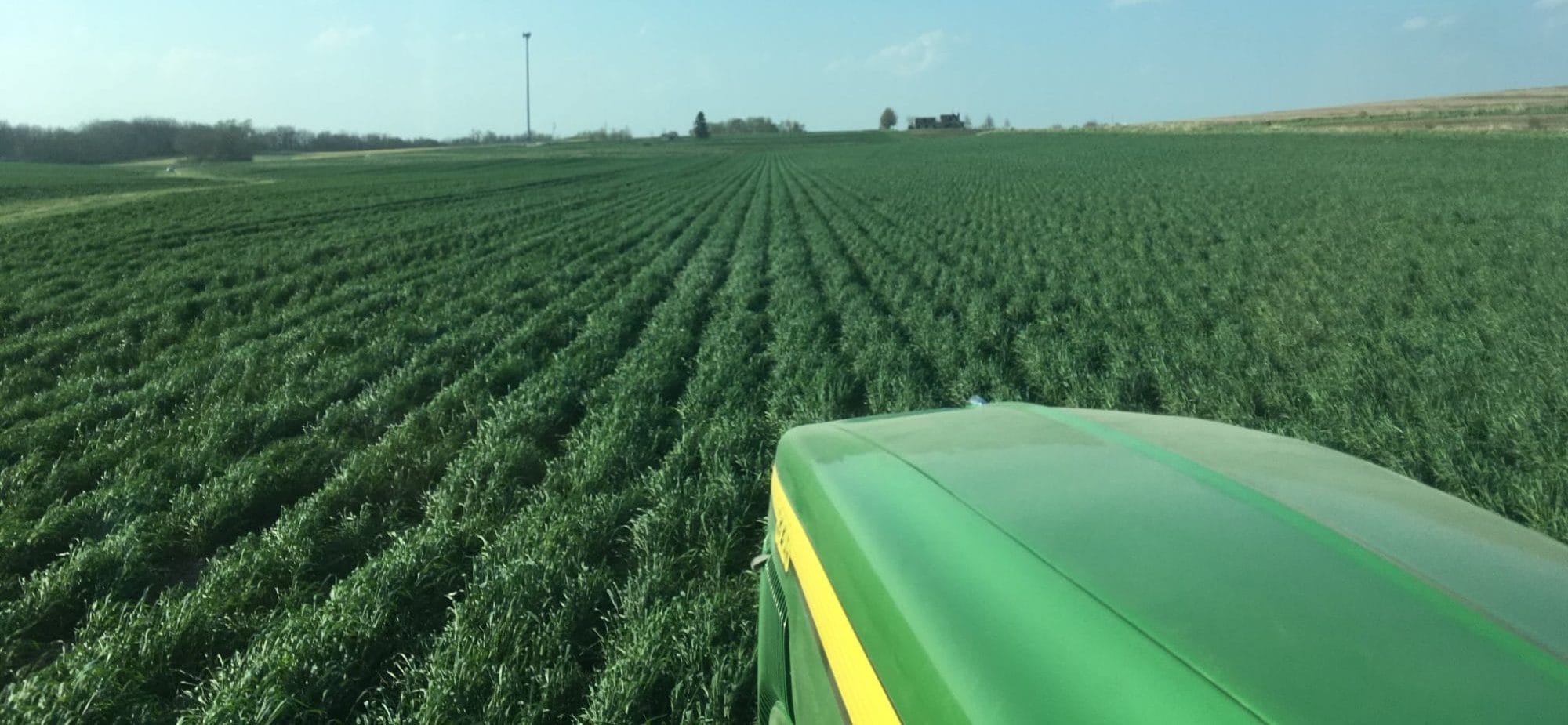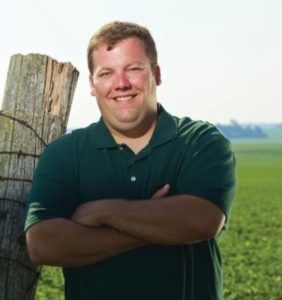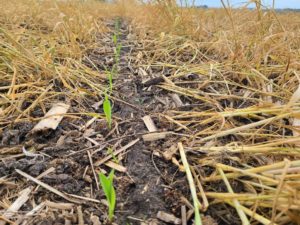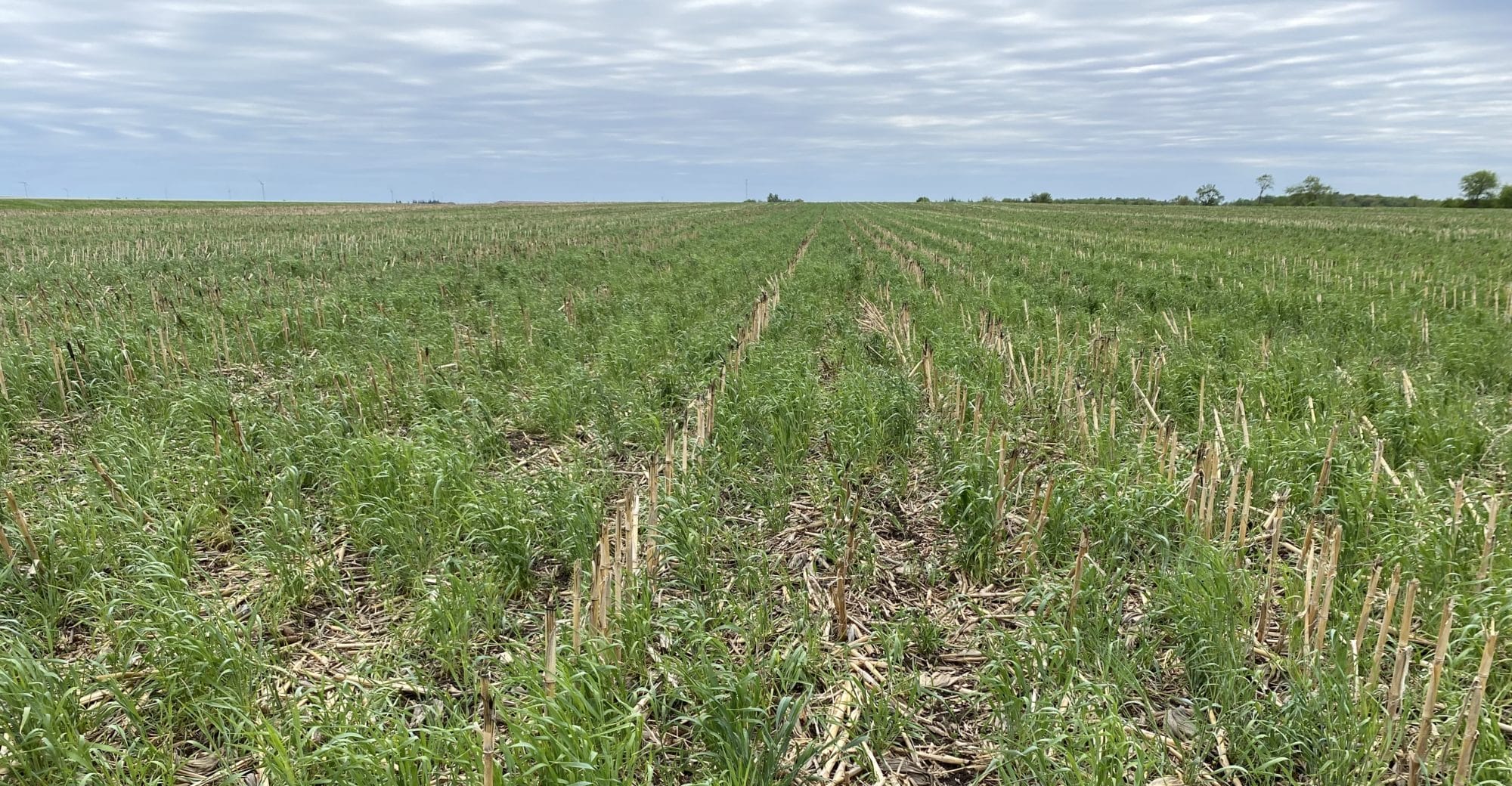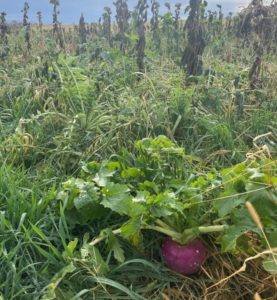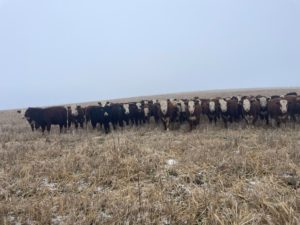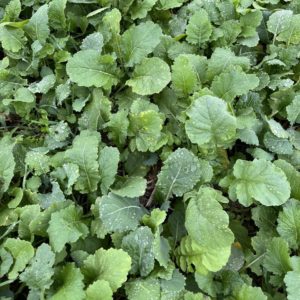Practical Cover Cropper: A Year in Review
Farmers were busy getting more cover crops on the landscape this year. Let’s review some of the featured farmers we talked to in 2023 while we look forward to another year of cover cropping in Iowa.
March 2023: Ron Stone
 Ron Stone’s primary goals with his cereal rye cover crop include building soil organic matter, building water holding capacity and improving infiltration to buffer against wet springs and dry summers. “I have done cover crops for many years in Humboldt and Polk counties, and I just started using cover crops in Warren county.”
Ron Stone’s primary goals with his cereal rye cover crop include building soil organic matter, building water holding capacity and improving infiltration to buffer against wet springs and dry summers. “I have done cover crops for many years in Humboldt and Polk counties, and I just started using cover crops in Warren county.”
Fall strip-till for spring success: After planting rye, Ron strip-tills in the fall, creating a narrow strip to plant corn in the spring. Ron explains that this method reduces the risk of N tie-up, pathogen spread and competition between the rye and the corn.
Planting green: Building organic matter is one of his primary goals, so Ron prioritizes planting green to maximize spring biomass. Planting green has a few additional benefits: Ron finds his planter glides through living rye, and with improved infiltration, he’s able to get in the field more easily during a wet spring. Ron terminates the rye within a week of planting on a warm day with glyphosate.
April 2023: Jason Russell
Planting green is essential for season-long corn and soybean health on Jason Russell’s family farm near Monticello, Iowa. We chatted with Jason about planting green and planter set-up for planting into covers.
Jason shared his 4 planting green tips in a previous blog post.
May 2023: Adam Mayer
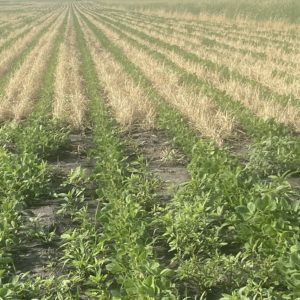 Adam Mayer farms near St. Ansgar, Iowa, where he typically cover crops 150 acres with cereal rye by aerial seeding into standing corn and drilling after soybeans. Adam became interested in cover crops for their potential to save him money on weed control.
Adam Mayer farms near St. Ansgar, Iowa, where he typically cover crops 150 acres with cereal rye by aerial seeding into standing corn and drilling after soybeans. Adam became interested in cover crops for their potential to save him money on weed control.
It’s all about biomass: Last spring, after seeing strong weed suppression from his cereal rye cover Adam eliminated his pre-plant herbicide pass on a soybean field that had previously had high waterhemp and giant ragweed pressure. He attributes good weed control to a few factors: a solid stand of rye, early season growth, no-till residue and later termination of the rye. He notes that terminating the rye three weeks after planting achieves a canopy relay between the rye biomass and the soybeans canopying out.
The trade-off: “The cost savings from cutting the pre-plant pass probably would’ve been in the $25/acre range,” says Adam. Comparing the cost of the cover crop to the money he saved, he notes, “The savings got us most of the way there, on covering the cover crop seed cost and nearly there on the application cost.”
Thinking ahead: With the cool weather slowing cover crop growth this spring, Adam will make the call in the next week, if he can skip this year’s pre-plant pass. Considering next fall’s cover crop, he advises, “the earlier the better” to get the stand and growth required to achieve good weed suppression the following spring.
July 2023: Chris Gaesser
 After practicing no-till on their family farm for many years, Chris Gaesser and his parents began incorporating cover crops in 2010 to further improve soil health. Eventually, that path led Chris to grow cover crops for seed, to use them on his own farm and to sell to other farmers through his business, GX Agriculture.
After practicing no-till on their family farm for many years, Chris Gaesser and his parents began incorporating cover crops in 2010 to further improve soil health. Eventually, that path led Chris to grow cover crops for seed, to use them on his own farm and to sell to other farmers through his business, GX Agriculture.
Chris shared about his experiences growing cereal rye and other small grains for cover crop seed, including specifics of harvest and post-harvest handling, during a shared learning call. Read about what he has learned with over a decade of experience with cover crops in this blog post re-capping his call.
August 2023: Amos and Tina Troester
 Amos and Tina Troester own and operate T-A Cattle and Covers LLC near Garnavillo, Iowa, where they grow corn, soybeans, oats, cereal rye and triticale. The Troesters are transitioning to a stocker cattle enterprise so they can better use their diverse cover crop mix into the fall and winter after they come off their rotationally-grazed perennial pastures in the summer.
Amos and Tina Troester own and operate T-A Cattle and Covers LLC near Garnavillo, Iowa, where they grow corn, soybeans, oats, cereal rye and triticale. The Troesters are transitioning to a stocker cattle enterprise so they can better use their diverse cover crop mix into the fall and winter after they come off their rotationally-grazed perennial pastures in the summer.
Seeding strategy: After a small grain like rye is harvested, Amos seeds a diverse cover crop mix featuring species like Austrian winter peas, Sunn hemp, clovers, brassicas and more. This summer they are drilling a mix at 48 lb/ac with the goal of getting roughly 60 live seeds per square foot. Their cattle will graze November through January, so good growth before the first fall frost is important.
Feed value: Amos grazed 74 head of cattle on 50 acres of cover crop for 94 days (Nov. 2022 to Jan. 2023). The cattle gained an average of 151 lb per head (1.61 pounds per day) during the 94 days. Amos calculated the total cost per ac (seed, supplemental feed, water, fence, labor, etc) for the grazing at $165.90 per ac (or a cost of $0.74/lb. gained). When he sold the cattle in February, the extra 151 lb/head brought an additional $281.62 in revenue/head (at raw weight price $1.865/lb.). All in all, grazing the cover crop provided a net profit of $250.90/ac., not including the additional profit from the grain harvested in the spring. Amos still sees room for improvement. “We didn’t fully utilize those acres; we could’ve increased the stock by 20 to 30 head, but it will be different year to year,” he says.
Amos’ tips for profitable grazing:
- Start grazing earlier to graze more biomass.
- Determine the best weight class of cattle for efficiency and conversion.
- Create a crop rotation that prioritizes grazing cattle in the fall and winter every year.
- Put your best cover crop grazing mix after your small grain in the rotation.
November 2023: Roger Harrington, Ron Rethmeier and Jordan Brichacek
Roger Harrington
Roger Harrington of Ollie, Iowa, opted to use several different seeding methods for his cover crops including broadcast seeding, drone application and drilling covers following harvest.
Ahead of corn, Roger uses a four-species cover crop mix of tillage radishes, turnips, rape and forage collards. He applied the mix using both broadcast and drone application in early September, and they already have substantial growth. After cover cropping for over ten years, Roger is keen to experiment: “I’m trying to get some added benefits from using different species in the mix,” says Roger.
Roger just wrapped up drilling cereal rye on 600 acres in mid-October at one bushel per acre. With the warm weather and rain, the cereal rye has just begun to emerge.
Ron Rethmeier
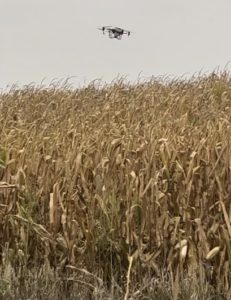 Laurel, Iowa, farmer Ron Rethmeier grows corn and soybeans and has opted to use a drone for planting the last two years on his 53 cover-cropped acres. Ron’s main reason for choosing the drone? “I don’t have much time to plant cover crops, so I found something time-saving,” Ron says.
Laurel, Iowa, farmer Ron Rethmeier grows corn and soybeans and has opted to use a drone for planting the last two years on his 53 cover-cropped acres. Ron’s main reason for choosing the drone? “I don’t have much time to plant cover crops, so I found something time-saving,” Ron says.
Ron worked with a local drone operator to have them fly on 60 pounds per acre of cereal rye in early September. Last year, Ron tried a mix of oats and radishes on some acres and they didn’t get good growth before they winter-killed, so he opted for a cereal rye this year for more winter growth.
Jordan Brichacek
 Jordan Brichacek farms near Dodge, Nebraska, where he, too, tried multiple seeding methods for his covers this fall.
Jordan Brichacek farms near Dodge, Nebraska, where he, too, tried multiple seeding methods for his covers this fall.
Jordan used a 42-foot air seeder for over 1,000 acres and also tried broadcasting on 265 acres.
At Jordan’s farm, they began planting covers in early September and are continuing to plant into late October.
On 75 percent of their acres, they seed cereal rye and on the remaining 25 percent they grow wheat that will serve as a cover crop, but come spring, some of that wheat will be grown for cover crop seed.
“We usually seed one bushel per acre for just cover crops and if it is going to be grown for seed, it will be seeded at 90 pounds,” he says.

